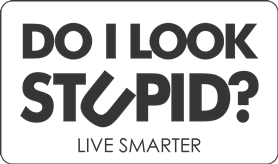Nature has made each human being unique. However, we still have a large number of behavioural traits that can be studied with a fair degree of accuracy and predictability. It might take you years to actually understand someone fully, but it’s not impossible to arrive at a general idea about a person in a few meetings. Learning about people’s personalities early on can lead to less stress at work or save you a broken heart later in your relationships. It’s like getting a head start.
1. Start paying attention to people’s body language in regular stress free situations early on. Everybody has his or her own level of ‘regular’. This is a called that person’s baseline behaviour. Anything out of the ordinary that gives you information is always ‘out of the ordinary’ in the context of this baseline behaviour.
2. Breathing: Short, or sharp breathing indicates nervousness. Deep breaths indicate the opposite. Sharp breathing could also allude to the beginning of anger.
3. Nervous Ticks: Is the person tapping something continuously or shaking his leg? This is usually impatience or nervousness (it could also be nervous in a good way; that is excited). Bear in mind that some people have these as part of their baseline behaviours, like people with a mild form of attention deficiency may exhibit such ticks in their regular behaviour.
4. Leaning: If someone leans towards you when you’re speaking, that person is interested in you or what you’re saying. Similarly, leaning away could mean the opposite.
5. Twitching the mouth: This could mean that the person is disinterested with what you’re saying, or possibly even annoyed.
6. Direction of looking: If someone’s looking to his left while recounting a story to you, he’s probably telling the truth. If he’s looking to his right too often, you can be reasonably sure he’s making up some parts if not all of it.
7. Telling lies: Stalling, blinking too long and stuttering are tell tale signs. But the most common way to know if someone is lying to you is to look out for their eyes twitching or tensing up a little while lying.
8. Cultural differences: Be conscious of the cultural background of the person you’re trying to read. All of the above may not apply across different cultures. Not looking someone in the eye in America may imply that you have something to hide. In Japan, it’s merely a sign of respect, especially if the person is interacting with someone older.
9. Comfort with language: A person interacting with you with English as their second or possibly even third language may exhibit a lot of nervous ticks and ‘suspicious’ signs, but they may be due to their anxiety about communicating correctly.
If you really want to become good at this, try and analyse photographs or watch movies from different parts of the world with the audio and subtitles off and try to understand the faces and bodies of the actors.
Watch your own body – posture, expressions, sounds, movement and eye-contact and figure out what message you give out about yourself.
Visual Courtesy: http://www.flickr.com/photos/ivanmcclellan/







